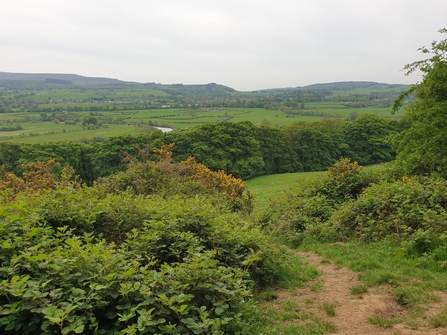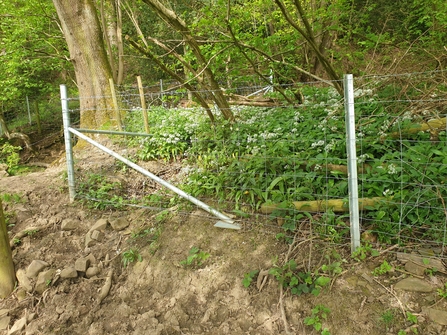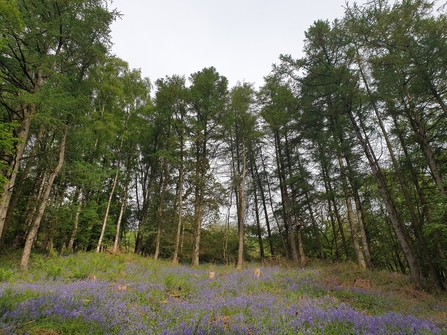Inhabiting an almost impossibly steep seeming slope next to the floodplain of the River Lune just outside of Lancaster sits Aughton Woods. Pronounced ‘Afton’ this Site of Special Scientific Interest is predominantly made up of majestic woodland, a mixture of semi-natural ancient woodland along with some areas of true ancient woodland that sit within the deep gullies cut by the streams that tumble down the hillside.
Restoring Aughton Woods
Larch plantation at Aughton Woods - Jenny Bennion

Oak woodland at Aughton Woods - Jenny Bennion
The woodland canopy is formed by oak, wych elm, hazel and some small-leaved limes that sit at the very northern tip of their UK range. In spring the woodland floor is carpeted by bluebells, which are followed throughout the year by species including opposite-leaved golden-saxifrage, foxgloves, wood speedwell, soft-shield ferns and the rare wood fescue.
Hiding at the western edge of Aughton Woods is Lawson’s Meadow. This unexpected glade that appears from within the trees was once a natural meadow and is still visited by a bevy of butterflies and other invertebrates on a sunny day.

Lawson's Meadow at Aughton Woods - Jenny Bennion
Along with all of those amazing insects, Aughton Woods is also home to a giant badger sett, brown hare, roe deer, and an abundance of bird life. Pied flycatchers can be heard and sometimes spotted calling for a mate, and a crepuscular visit could treat you to the ‘roding’ calls of the male woodcock also on the lookout for a partner.
However, even if you don’t catch either of these, your visit is sure to be accompanied by bird song. Listen out for nuthatches, woodpeckers, chiffchaffs, treecreepers, chaffinches and five species of tit.
But Aughton Woods needs our help. Historically areas of the woodland were cleared and filled with plantations of larch. The combination of dense planting numbers and the larch needles forming a thick acidic mulch on the woodland floor is preventing any natural regeneration by native tree species. And sadly over the years Lawson’s Meadow has lost much of its floral diversity.
However, thanks to £65,000 funding from the Lancashire Environment Fund, the Halton Lune Trust and the Government’s Countryside Stewardship scheme we have been able to start working giving nature the helping hand it needs to mend these woes.

Long-lasting metal fencing has been installed at Aughton Woods - Jenny Bennion
The first job was to install 1,500m of long-lasting metal clippex fencing, along with new gates and new water gates at the bottom of the gullies.
Next will come work to improve the access track to the meadow. This will then allow us to cut the meadow at the end of summer. Once the clippings are removed, the meadow will be scarified and planted with wildflower seed from just over the valley in the Forest of Bowland National Landscape. Then a regular grazing regime will be introduced with the help of the neighbouring farmer.

Larch plantation at Aughton Woods - Jenny Bennion
Come autumn and the end of the bird nesting season we will start work to remove 85m2 of the larch. These areas will then be replanted with oak saplings grown from acorns harvested on site. Apart from essential maintenance the woodland will then be allowed to naturally regenerate.
There is a circular footpath around the western edge of Aughton Woods which can be accessed from the Lune Valley Ramble trail. Please come and experience the peace and beauty of this place whilst helping to care for it by sticking to the footpaths and keeping dogs under close control, ideally on short leads.
